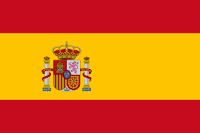Render farm: what is it and how does It work?
A render farm consists of a specialized cluster of computers that is tailor-made for rendering digital content. It is pivotal in multiple sectors that depend extensively on computer-generated imagery (CGI), such as film production, television, animation, and architectural visualization. This article delves into the definition of a render farm, its significance, its operational mechanisms, and the advantages it provides to the creation of digital content.
Definition and purpose
A render farm is a group of networked computers known as nodes or servers, working together to complete rendering tasks. These tasks can involve converting three-dimensional data into two-dimensional images or video for animations, visual effects, or architectural visualizations. The main function of a render farm is to greatly accelerate the rendering process, which is often computationally demanding and slow, particularly with intricate scenes.
How a render farm works
Render farms function utilizing a system known as distributed computing. This technique splits a large rendering job into smaller, more manageable segments, which are then allocated across various computers within the farm. Each node in the farm processes its assigned part of the task, and once all nodes have completed their parts, the individual outputs are compiled into a single, coherent output file.
Components of a render farm:
- Render nodes. These are the individual computers that do the rendering. They are equipped with high-performance CPUs and, increasingly, GPUs to handle the demands of rendering.
- Storage system. A central storage system is crucial for storing large datasets and rendered files. It must be capable of high read/write speeds to serve multiple nodes simultaneously.
- Queue manager. Software that distributes tasks to the nodes, monitors their progress, and reassigns tasks if a node fails.
- Network infrastructure. A fast and reliable network is essential to manage the transfer of data between the nodes and the storage system without significant delays.
Benefits of using a render farm
- Time efficiency. Render farms dramatically reduce the time required to render complex scenes, allowing for more iterations and faster completion of projects.
- Cost-effectiveness. By offloading rendering tasks to a render farm, companies can use their primary workstations for other productive tasks, optimizing resource usage.
- Scalability. Render farms can be scaled by adding more nodes, which allows for greater flexibility in handling projects of varying sizes and complexities.
- High-quality outputs. With the increased processing power, render farms can produce high-resolution images and animations that might not be feasible on individual workstations.
Applications of render farms
- Film and animation. Render farms are extensively used in the film industry to render scenes for movies and animations, especially those with complex visual effects and detailed digital backgrounds.
- Video games. Game developers use render farms to create pre-rendered assets and cinematic sequences found in video games.
- Architectural visualization. Architects and designers use render farms to generate photorealistic renders of architectural projects, which are used for client presentations and marketing.
Challenges and considerations
While render farms offer numerous benefits, they also come with challenges such as high initial setup and maintenance costs, the need for specialized personnel to manage the system, and potential technical issues like network bottlenecks or hardware failures.
A render farm is a powerful tool in the arsenal of digital content creators, providing the necessary computational power to bring complex visual projects to life. By understanding how render farms function and leveraging their capabilities, industries that depend on high-quality renders can achieve better results faster and more efficiently than ever before.
Preferring TurboRender for your rendering needs is especially advantageous when the realistic depiction is crucial to your project. TurboRender excels in accurately rendering complex materials thanks to its advanced technology that ensures high fidelity in texture, light interaction, and color accuracy. This capability makes it an ideal choice for industries where detail matters, such as architecture, product visualization, and visual effects.
Related Posts



Render Your Artwork Online
 Easy setup
Easy setup  24/7 tech support
24/7 tech support 









